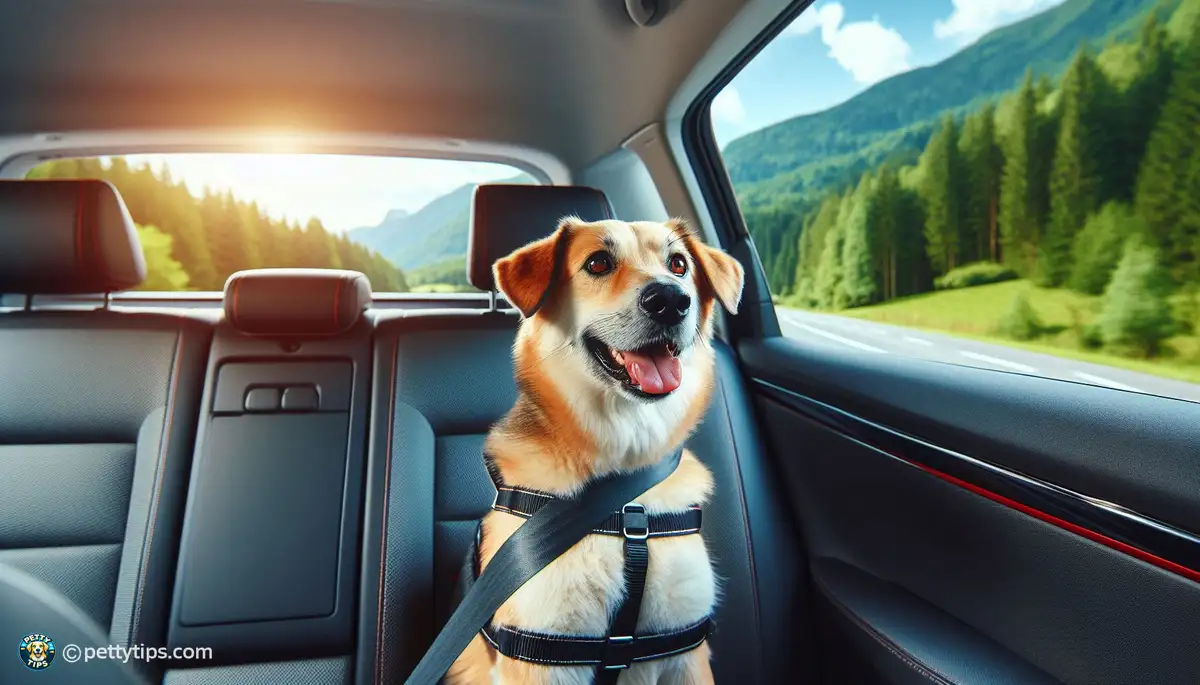Ensuring Safety: Tips for Securely Traveling with Your Dog

Making the Decision to Travel with Your Dog
Traveling with your furry companion can be a rewarding experience, but ensuring their safety should always be your top priority. Before embarking on any journey, take some time to assess whether your dog is ready for the trip. Consider factors such as their age, temperament, and health status. Some dogs may thrive on new adventures, while others may find travel stressful. It's essential to prioritize your dog's well-being and comfort when making travel plans.
Risks of Unsafe Travel
Unsafe travel practices can pose serious risks to your dog's health and safety. From car accidents to heatstroke, there are various hazards to be aware of when traveling with your pet. Dogs who are not properly restrained in a vehicle can become projectiles during a collision, leading to severe injuries or even death. Additionally, leaving your dog unattended in a parked car, especially in hot weather, can quickly result in heatstroke, a potentially fatal condition. Understanding these risks is crucial for taking the necessary precautions to keep your dog safe while traveling.
Preparing for Safe Travel
Visit the Vet
Before hitting the road with your dog, schedule a visit to the veterinarian for a thorough check-up. Ensure that your dog is up-to-date on vaccinations and is in good health for travel. Your vet can also provide advice on any specific health considerations for your destination, such as parasite prevention or altitude sickness.
ID and Microchipping
It's essential to make sure your dog has proper identification before traveling. Ensure that your dog's collar includes an up-to-date ID tag with your contact information. Additionally, consider having your dog microchipped if they aren't already. A microchip can be a lifesaver if your dog becomes lost or separated from you during your travels, providing a way for them to be easily identified and reunited with you.
Safe Travel by Car
Proper Restraint
When traveling by car with your dog, it's crucial to ensure they are properly restrained to prevent injury in the event of a sudden stop or accident. Invest in a secure harness or travel crate specifically designed for use in vehicles. Avoid allowing your dog to roam freely in the car, as this can be dangerous for both them and the driver.
Comfort and Temperature Control
Create a comfortable and safe space for your dog in the car by providing adequate bedding and ventilation. Avoid leaving your dog alone in a parked car, especially in hot weather, as temperatures can quickly rise to dangerous levels. If you need to make stops during your journey, plan ahead to ensure your dog's safety and comfort.
Safe Travel by Air
Research Airline Policies
If you're planning to travel by air with your dog, take the time to research the policies and procedures of the airline you'll be flying with. Each airline has its own rules regarding pet travel, including size and breed restrictions, crate requirements, and additional fees. Make sure you understand these policies well in advance to avoid any surprises or complications on the day of travel.
Acclimating Your Dog to Travel
Flying can be a stressful experience for dogs, so it's essential to take steps to acclimate them to the process before your trip. Gradually introduce your dog to their travel crate in the weeks leading up to your flight, using positive reinforcement techniques to create a positive association. Consider consulting with a professional trainer or behaviorist if your dog experiences significant anxiety or fear related to travel.
Ensuring Comfort and Well-being
Pack Essentials
When packing for your trip, don't forget to include essential items for your dog's comfort and well-being. This may include food and water bowls, their regular diet, medications, favorite toys or blankets, and any necessary grooming supplies. Having familiar items from home can help reduce your dog's stress and make them feel more at ease in unfamiliar surroundings.
Stick to Routine
Maintaining your dog's regular routine as much as possible while traveling can help reduce stress and anxiety. Stick to familiar mealtimes, exercise routines, and bedtime rituals to provide a sense of stability and security for your dog. Additionally, be mindful of your dog's need for breaks and opportunities to stretch their legs during long journeys.
Emergency Preparedness
Plan for Emergencies
No one wants to imagine encountering an emergency while traveling with their dog, but it's essential to be prepared for the unexpected. Research veterinary clinics along your route and at your destination, so you know where to turn if your dog needs medical attention. Additionally, pack a first-aid kit for your dog that includes essentials such as bandages, antiseptic wipes, and any necessary medications.
Know When to Seek Help
If your dog experiences any signs of distress or illness during your travels, don't hesitate to seek help from a veterinarian. Common signs of trouble may include vomiting, diarrhea, excessive panting, lethargy, or refusal to eat or drink. Trust your instincts and prioritize your dog's health and well-being above all else.
Conclusion
Traveling with your dog can be a wonderful opportunity to create lasting memories together, but it's essential to prioritize their safety and well-being every step of the way. By following these tips and taking the necessary precautions, you can ensure that your furry companion stays happy, healthy, and secure during your adventures together. Remember to plan ahead, be prepared for the unexpected, and above all, enjoy the journey with your beloved canine companion by your side.
